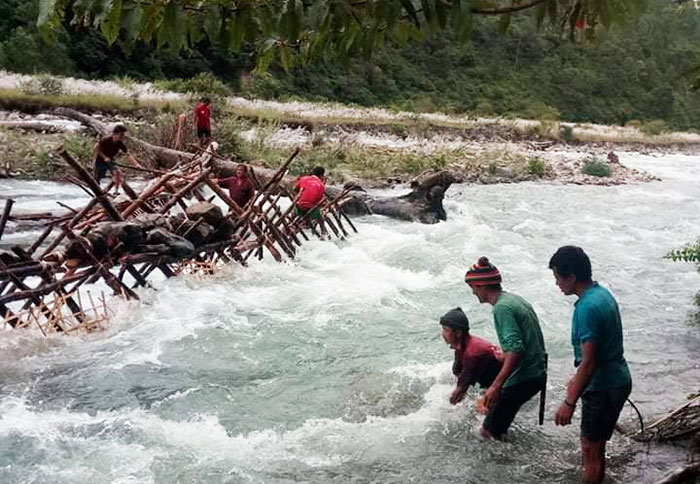Sonam Jamtsho | Intern
Athang, Wangdue – The Harachhu flows from Dorshigang (Black Mountain) and passes between two chiwogs of Rukha-Samthang and Lawa-Lamga. The river joins the Punatsangchhu at Tsangphu Zomsa, where Taksha Range Office is, 59km from Ganteythangka or Wangdue proper.
Harachhu is the river’s new name; it used to be called Nyrichhu. Its source is in Ngultsho, a lake in Dorshigang. It is this river from where the famous Druk Nya (Schizothorax), popularly known as Nya Doseam comes from. For the people of Rukha-Samthang and Lawa-Lamga, Nya Doseam is one of the principal sources of income.
The people of Rukha-Samthang and Lawa-Lamga have been harvesting fish from the Harachhu since days beyond recall. Although fishing in streams, rivers, lakes, channels and dams without a valid fishing licence is strictly prohibited in the country, the people of these villages were allowed to harvest fish because of their remoteness and poor economic situations. The village elders say that a written permit was issued to the people of the two communities which allowed them to harvest fish from the Harachhu. The permit, though, is believed to have been lost.
Concerned that overfishing could lead to unsustainable harvest in the future, RNR-RDC Bajo in collaboration with Department of Livestock (DoL), RNR sector of Wangdue, and JSWNP so formed the Harachhu Captures Fisheries Management Group in 2010. The objective of the group was to improve household-level nutrition and household income, improve post-harvest processing and marketing of fish products, empowering communities with rights, responsibilities and ownership to manage natural resources, poverty reduction, promotion of eco-tourism, and to promote flexible, resilient and sustainable management of capture fish resources.
Harachhu is also the habitat of the endangered White-Bellied Heron.

Dhang fishing in Samthang
Fish harvesting from the Harachhu happens between 7th to 9th and 12th, 2nd and 3rd months of the Bhutanese calendar—breeding time and season considered. The fishing is done in two ways:—dhang and drow. In the dhang way, the people of the communities go to the river in groups, cut or block the river, and bring out the fish. The drow way is not much different, only that the number of people in the groups is fewer.
The fishing season is on. It’s the time of drow way of fishing. The fishermen from Rukha-Samthang and Lawa-Lamga are already on the banks of the river. They make a long and difficult journey down to the riverbanks, often through dangerous precipices. Here they stay put for weeks on end, on a rotational basis.
And here, until the fishing season is up and gone, there is a different community. There are jokes and songs and drink, massive and meticulous division of labour. Sometimes brawls also happen.
Jambay Wangchuk from Samthang is a veteran fisherman. Now that the time for dhang fishing is approaching, he has already prepared for the big season. There are nine young and strong men in his team. Some are delegated to amass wood to smoke the fish and tend to the rough-hewn stove some metres away from the fishing spot. And there are the cooks and guards, and also those who must lay the dhang.


